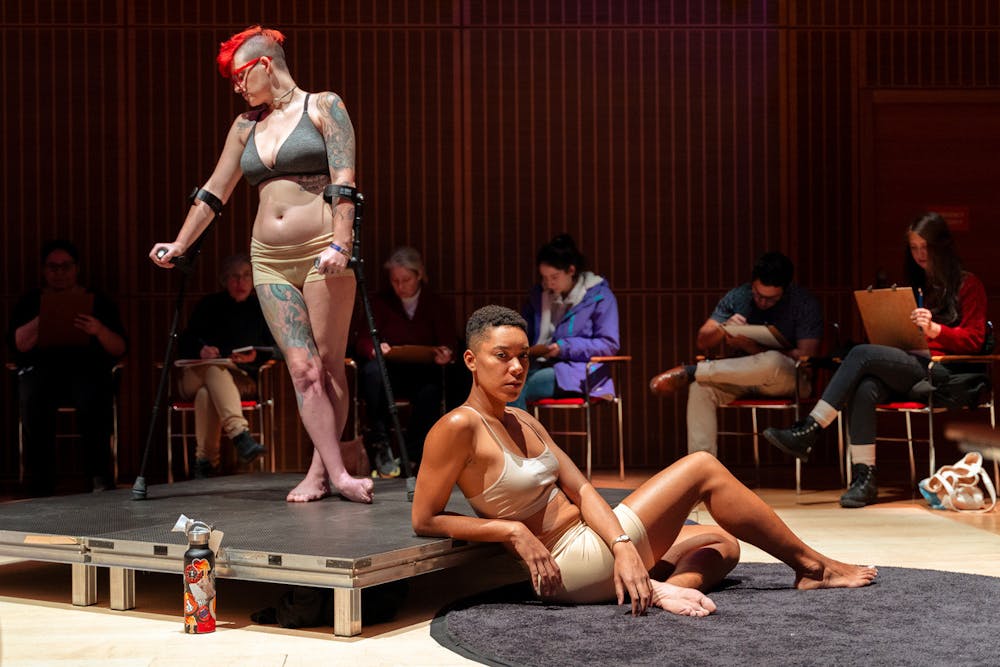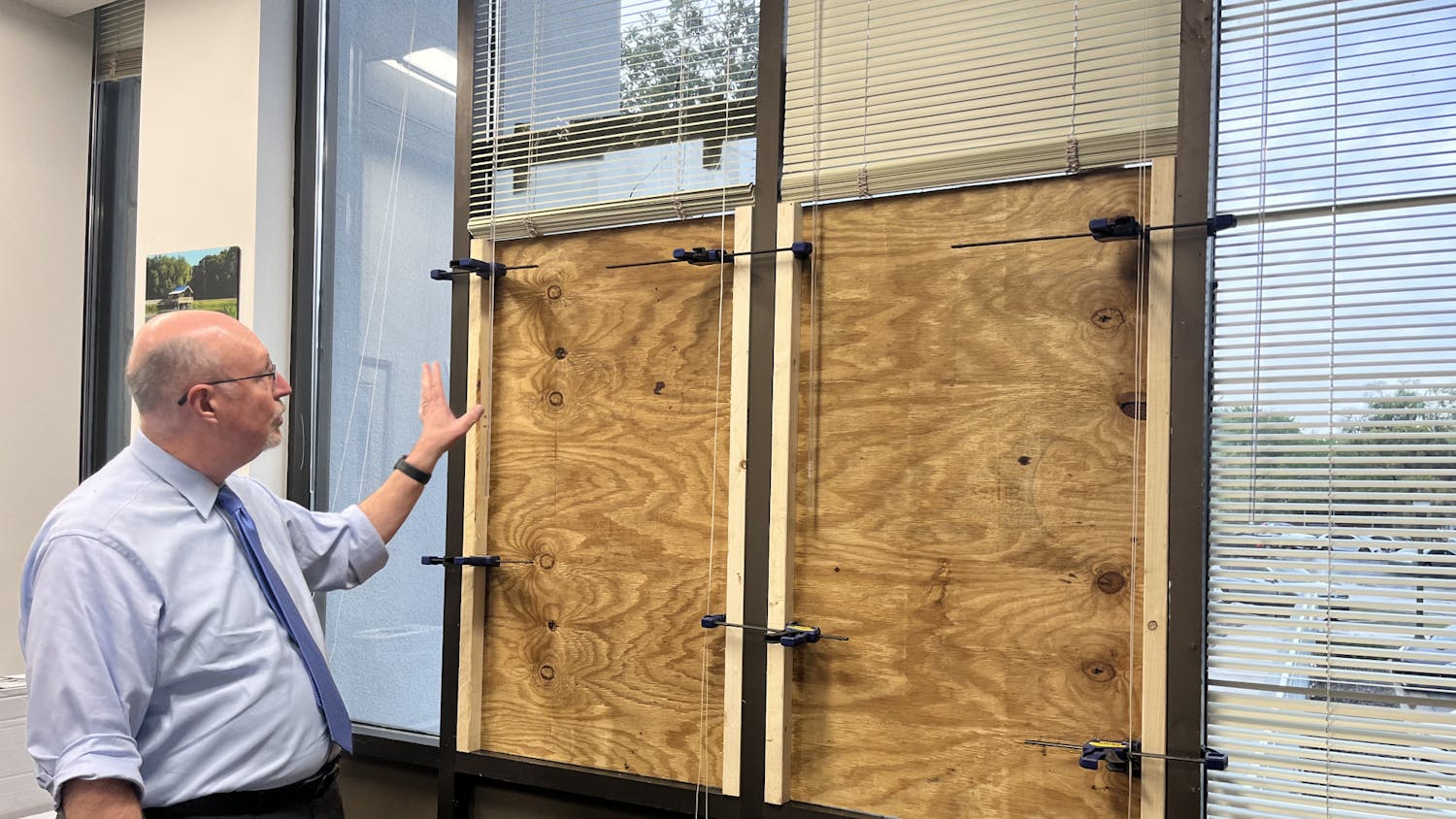Figure On Diversity, a figure drawing workshop series devoted to breaking down the boundaries of body exclusivity in the arts, will have its first Gainesville event on Sunday.
The event will be held on UF’s campus from 10 a.m. to 5 p.m. For security reasons, the address of the event is kept private. More information on how to attend and model for the event can be found on its website and Instagram.
As a figurative artist, art instructor and former figure-drawing model, Angela DeCarlis has occupied all sides of the easel.
In 2018, DeCarlis founded Figure On Diversity, and throughout their years in the art community, couldn’t help but recognize the overall lack of equal representation for different body types in figure-drawing classes.
The seven-hour workshop is divided into three parts. The first section, titled “Wellbeing in Figure Modeling,” allows workshop mentors to lead a group discussion directed toward the needs of model participants. The talking points range from vulnerability and empowerment to receiving payment for modeling and additional support resources.
During the “Physical Practice and Needs” section, participants will engage in movement games and practice holding timed poses. Models are also taught how to perform gender through their stances, occupy their space and avoid injury while posing.
The last part of the workshop, the “Open Drawing Session,” takes place from 2:30 p.m. to 5 p.m. Artists are invited into the workshop to draw the model participants, who will hold each pose for about 20 minutes total.
In art education programs across the country, figure models are often used to help artists develop and refine their skills. Figure drawing is generally practiced with live models in real-time, but DeCarlis wanted the workshop to also be true to the many different body types present in real life.
“For an artist coming into a Figure On Diversity workshop, the advantage is that you're working with multiple models, and they all belong to identities that you're less likely to see in those spaces in art,” DeCarlis said.
The models who pose for Figure On Diversity identify as BIPOC, transgender, gender-nonconforming, fat and/or disabled.
According to DeCarlis’ website, the figure-modeling population is predominately made up of white, thin, able-bodied and cis-gendered individuals. Figure On Diversity works toward making sure individuals of visibly marginalized communities feel worthy of and have access to equal representation in the arts.
Porchia Moore, Ph.D, the program head of museum studies at UF, said Figure On Diversity is about much more than inclusion.
“The male-centered or Eurocentric body type does not represent humanity,” Moore said. “Knowing that there's a workshop that raises the body and celebrates all figures but is wholly inclusive is not only inspirational and powerful, it’s a breath of fresh air.”
Figure On Diversity provides marginalized identities with the access to be seen and appreciated in a creative and safe artistic space, but DeCarlis said the purpose of the workshop extends far beyond the art community.
“In our society, we're generally taught to not look at strangers, especially if those strangers are different from us,” DeCarlis said. “People are in the middle of a growing process where they are looking to learn how to love their body in a society that has told them that they can't.”
DeCarlis attended the Pennsylvania Academy of Fine Arts, where they first began their figurative modeling career. After moving to Boston to finish their undergraduate education at Lesley University, they started organizing for the local figure-modeling community.
“It was around that time that I started to notice what a homogenous group we were, how many of us were, at a glance, young, thin, able-bodied white women,” DeCarlis said. “Mostly white women are allowed to feel beautiful, and other people have to fight for their right to feel beautiful.”
Louise Williamson, a 46-year-old regional representative for Scoliosis Association UK, modeled for Figure On Diversity’s online workshop on April 3. Since birth, she has been disabled with severe scoliosis, which led to height restriction and respiratory failure in her adult life.
Having never previously shown her full-length back scar to anyone but her closest family members, Williamson said being provided a platform to model at the workshop was a revolutionary experience for her and visibly marginalized communities.
“It has given us a voice and a visual representation, not only in the art world but in general,” she said. “It’s liberating to have that safe space, to be part of a group that says ‘I am here.’”
DeCarlis is now a third-year MFA student and figure-drawing instructor at UF’s College of the Arts. On April 10, they gave a presentation for the Arts Better the lives of Everyone (ABLE) Assembly hosted by Berklee College of Music. During the presentation, DeCarlis spoke about the figure-modeling population at UF.
During the Spring 2021 semester, UF employed 14 figure models. Of these models, only two were BIPOC, one was gender-expansive, 12 were “thin or athletic” and none of them were visibly disabled.
DeCarlis said the lack of diverse representation stems not from any bias during UF’s figure-modeling hiring process, but rather from the deeply rooted and systemic obstacles that limit marginalized communities from having equal access to the arts.
“To be able to go to college to study art is something that folks from low SES (socioeconomic status) backgrounds maybe aren't encouraged to pursue,” DeCarlis said. “So we're already looking at the people who know about this position, who already come from backgrounds that correspond to a certain degree of privilege.”
The median family income for a student who attends the School of the Art Institute in Chicago (SAIC), one of the largest art colleges in America, is $104,600. Additionally, nearly half of SAIC students are from families with incomes in the top 20%, and only 4.7% of students enrolled during the Fall 2020 semester identified as African American.
Moore said as a Black, female, able-bodied person raised in the south, Figure On Diversity’s work becomes critical because there is so much “anti-Blackness” that “operates in the world.”
“This is exactly what we need at this moment: to be able to contrast the opportunity, to see all body types as living, embodied indicators of life.”
Contact Brenna at bsheets@alligator.org. Follow her on Twitter @BrennaMarieShe1.






